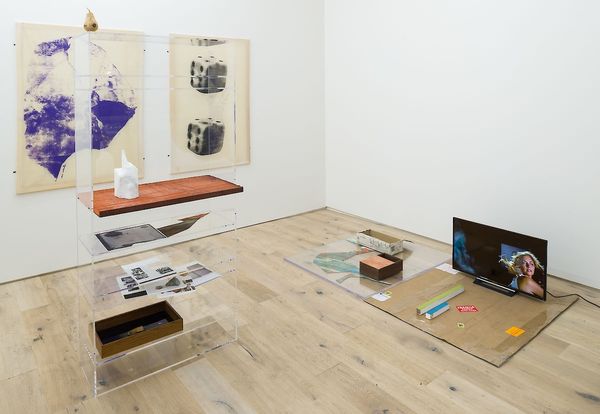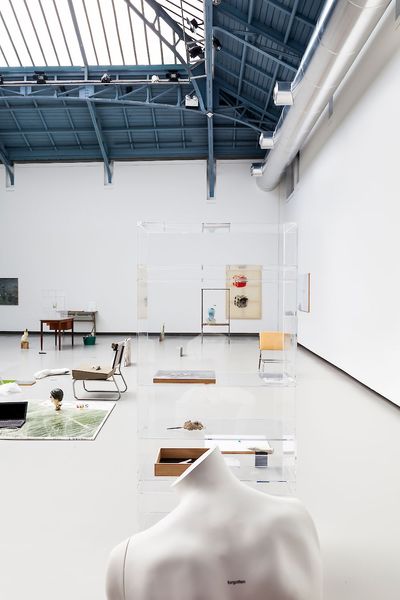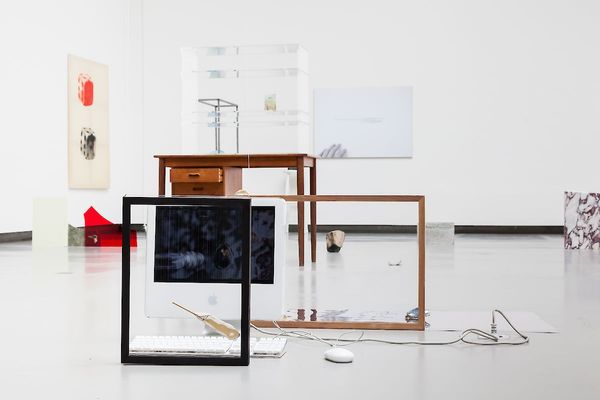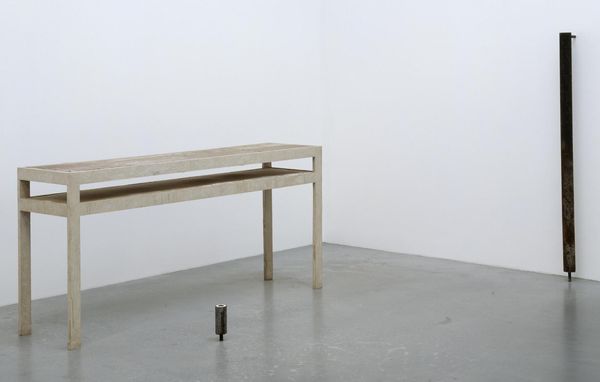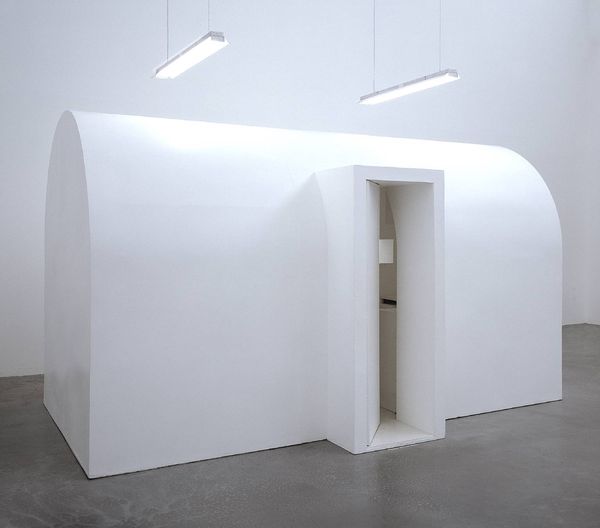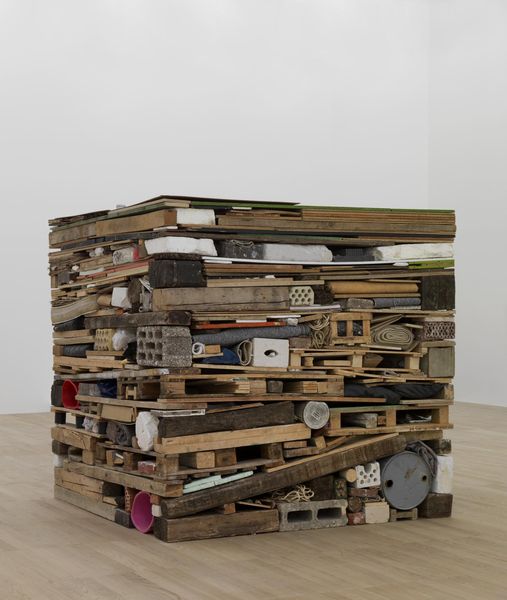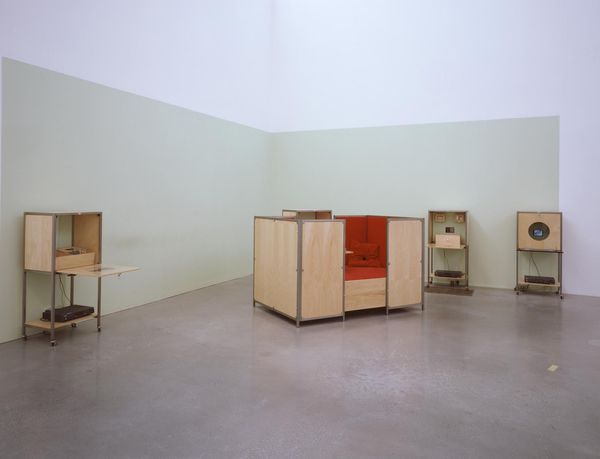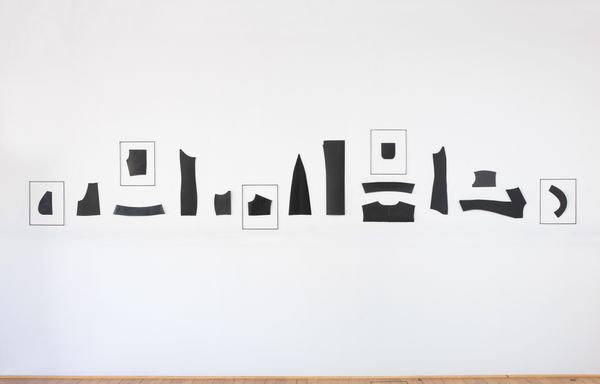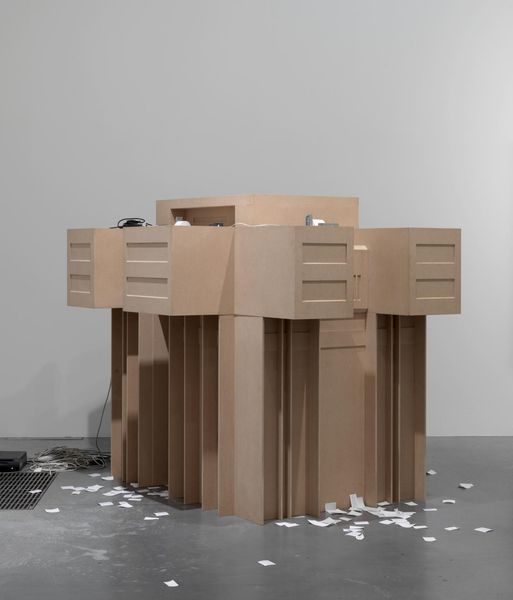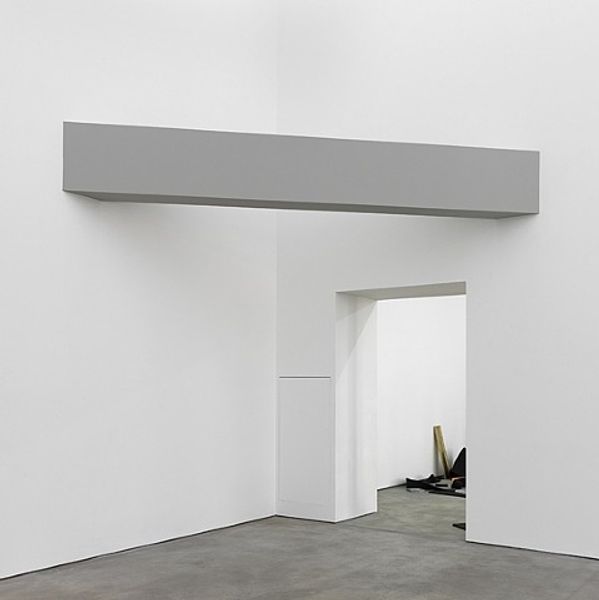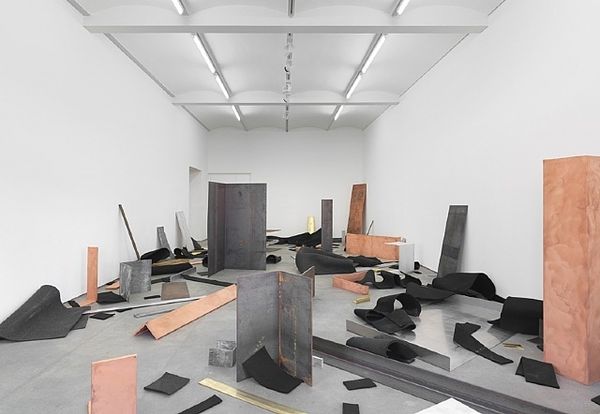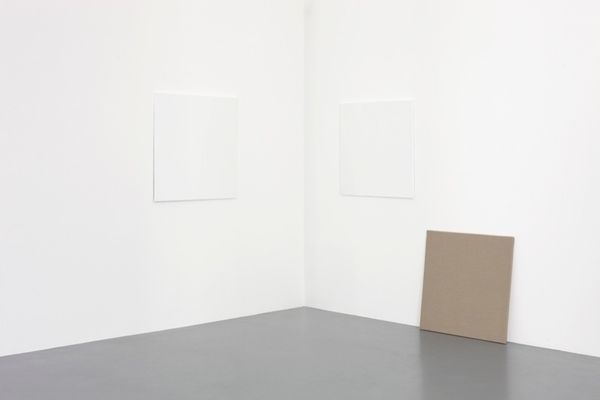
Dimensions: display dimensions variable
Copyright: © Peter Fischli and the estate of David Weiss, courtesy Matthew Marks Gallery, New York | CC-BY-NC-ND 4.0 DEED, Photo: Tate
Curator: Peter Fischli, born in 1952, is the creator of this captivating, albeit untitled, artwork currently residing in the Tate Collections. The display dimensions are variable, which is fitting, as it feels like a snapshot of a process rather than a static object. Editor: It’s like walking into an abandoned stage set after a really existential play. Ghostly. All that stark white. Curator: Exactly. It plays with ideas of transience and permanence, questioning the value we place on objects and labour. The discarded materials hint at a previous creative act. We might consider how capitalist systems foster a culture of disposability. Editor: Or maybe, just maybe, the artist forgot to clean up. It does have a certain… charming disarray. Like my studio, actually. Curator: I think it goes deeper. Consider the social implications of artistic production, the often-invisible labor involved in creating art. Editor: Well, for me, it's a beautiful mess. It whispers of potential, of art waiting to happen. Curator: A potent reminder that art exists not just in the finished product, but also in the messy process of creation. Editor: Yes, the beauty’s in the becoming.
Comments
tate 8 months ago
⋮
http://www.tate.org.uk/art/artworks/fischli-weiss-untitled-tate-t12468
Join the conversation
Join millions of artists and users on Artera today and experience the ultimate creative platform.
tate 8 months ago
⋮
At first glance Untitled (Tate) 1992–2000 appears to be a work in progress. The gallery is littered with the kinds of tools and rubbish found in a construction site or workshop. In fact, every element is a polyurethane sculpture. Like a three-dimensional trompe-l’oeil still-life painting, the installation tricks the eye. It reverses artist Marcel Duchamp’s notion of the ‘readymade’. This is when an everyday object is presented in an art gallery as an artwork. The artists said: ‘Duchamp’s objects could revert back to everyday life at any point in time. Our objects can’t do that; they’re only there to be contemplated. They’re all objects from the world of utility and function, but they’ve become utterly useless.’ Gallery label, October 2020
